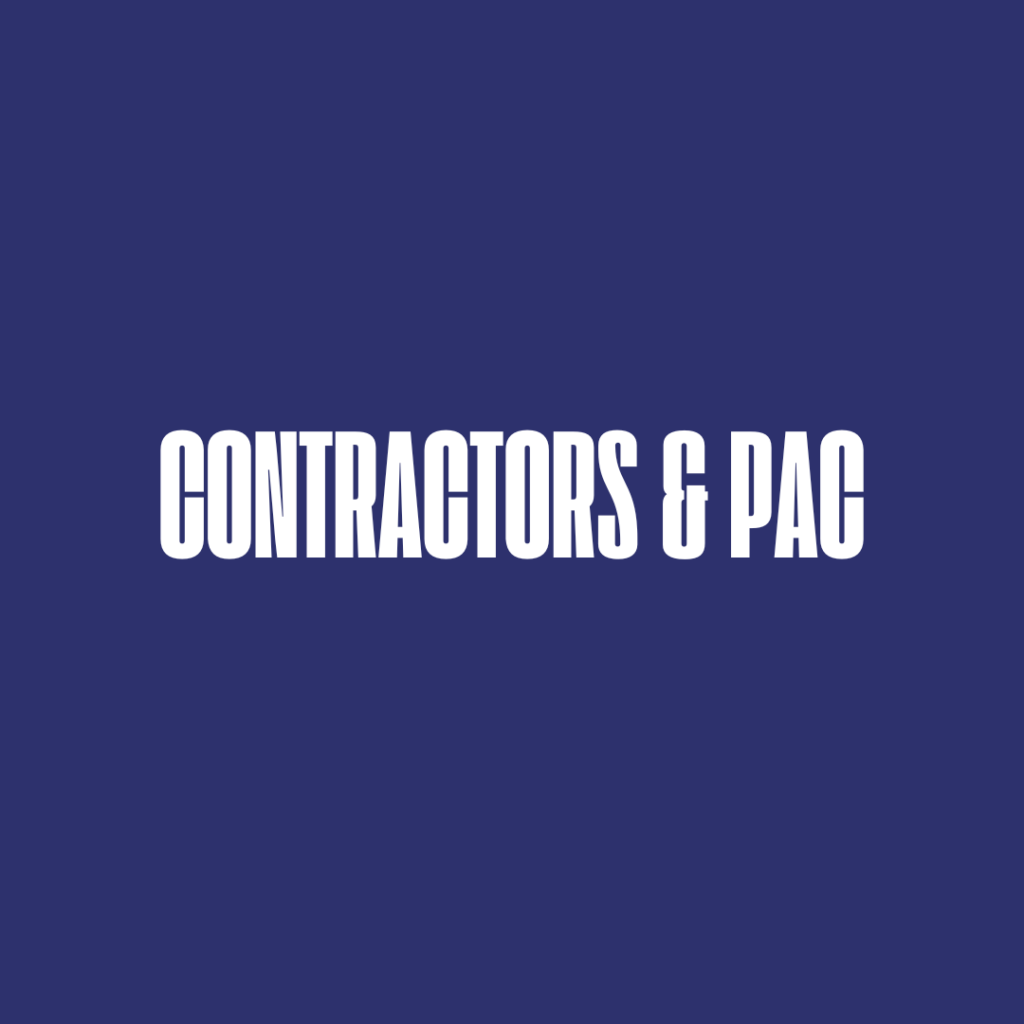
*This article has been updated to reflect a mathmatical mistake in the Oct. 4 article. We apologize for any inconvience. We have recalcuated projections here. These projections still show that enrollment increases will outpace the district’s predictions.
Here are the top points of the article:
- Enrollment trends in the Mahomet-Seymour School District have been difficult to predict, with district projections missing the mark since 2019.
- A demographic study from 2019 by Cropper GIS Consulting included only a 1.5-mile radius around the Village of Mahomet, leaving out significant parts of the district, which spans a much larger area.
- Enrollment predictions were revisited multiple times, but the latest study projected 3,583 students by 2030. In 2024, the district already had 3,519 students (the district now reports the number as 3,506 on their referendum website).
- The district’s growth model of 1.4% year-to-year may not be accurate. Based on district-provided data, the actual growth rate from 2015-2024 has been 1.7%.
- Using the 1.4% growth rate, class sizes in 2032 will likely exceed the district’s planned capacity of 300 students per grade.
- Max capacity could be reached by 2042, earlier than the district’s prediction of 2045, according to the 1.4% growth model.
- Recent growth in the area, including 753 new homes from 2017-2022, suggests enrollment will continue to rise faster than the district’s projections.
Enrollment trends in the Mahomet-Seymour School District have proved challenging to forecast, influenced by a variety of factors. Yet, despite the district’s enrollment projections missing the mark since 2019, the data tells a clear story: the district’s current enrollment predictions for the 2024 $112.8 million referendum will once again fall short of meeting the needs of the district.
The Mahomet-Seymour School District partnered with the Village of Mahomet to fund a demographic study in 2019 using Cropper GIS Consulting. Both entities wanted to predict what enrollment might look like over the next decade.
The school district and Village split the cost of the $11,500 demographic study that included a 1.5-mile radius of Village limits, even though the Mahomet-Seymour School District boundaries spread 15 miles north and south, and between 7 to 9 miles east and west on the west side of Champaign County.
Those predictions were revisited three times before 2022 because true enrollment numbers and the predictions were so far off. The last study done predicts that the Mahomet-Seymour School District will have 3,583 students enrolled by 2030. As of August 2024, the current enrollment of the Mahomet-Seymour School District was 3,519 students.
*This information was received via FOIA in August 2024.
Why are the predictions so far off?
Part of the problem could be the data sets the District and Village of Mahomet used to make their predictions. For the Cropper study, information about approved developments within the 1.5 mile boundary of the Village of Mahomet were included, but anything outside the Village boundaries was not considered. Additionally, the Village of Mahomet has consistently allowed developers to modify subdivision plans, generally allowing more homes to be built than originally planned.
Another consideration might be that there are students who live outside the district and attend school at Mahomet-Seymour. Despite the district denying this claim, both employees and residents have reported to this publication that students who live outside the district are, in fact, attending school in Mahomet-Seymour School District.
For the sake of this article, though, let’s put the reasons the study and predictions may have failed behind us. Instead, let’s look at (district reported) enrollment of the Mahomet-Seymour School District and their growth projections to see why their predictions might fall short once again.
The District’s 1.4-percent growth model
According to msreferendum2024.org, the district uses a 1.4-percent year-to-year growth average model from 2015-2024 to predict future enrollment. They also show that current enrollment is 3,506 (per data received from FOIA in Aug. 2024, the enrollment was 3,519).
When looking at the projections chart the district gives at msreferendum2024.org, one thing stands out. From 2024-2031 the growth model appears to not account for 1.4 percent growth each year. When the numbers are calculated in the projections, it becomes evident that the district uses an inconsistent growth model year-to-year in their projections, getting to 3755 students in 2031.
From 2024-2025, they use a 2% growth rate; from 2025-2026, they use a 0.31% growth rate; from 2026-2027 they use a 1.5% growth rate; from 2027-2028 they use a 0.38% growth rate; from 2028-2029 they use a 0.71 percentage growth rate; from 2029-2030 they use a .6% growth rate and from 2030-2031 they use a 1.4 percent growth rate.
If we use the 1.4 percentage year-to-year growth provided on the District’s referendum website and a starting point of the current enrollment as provided to this publication by the district via FOIA, 3,519 students in 2024, projections actually show that over the next 20 years, enrollment would look like this:
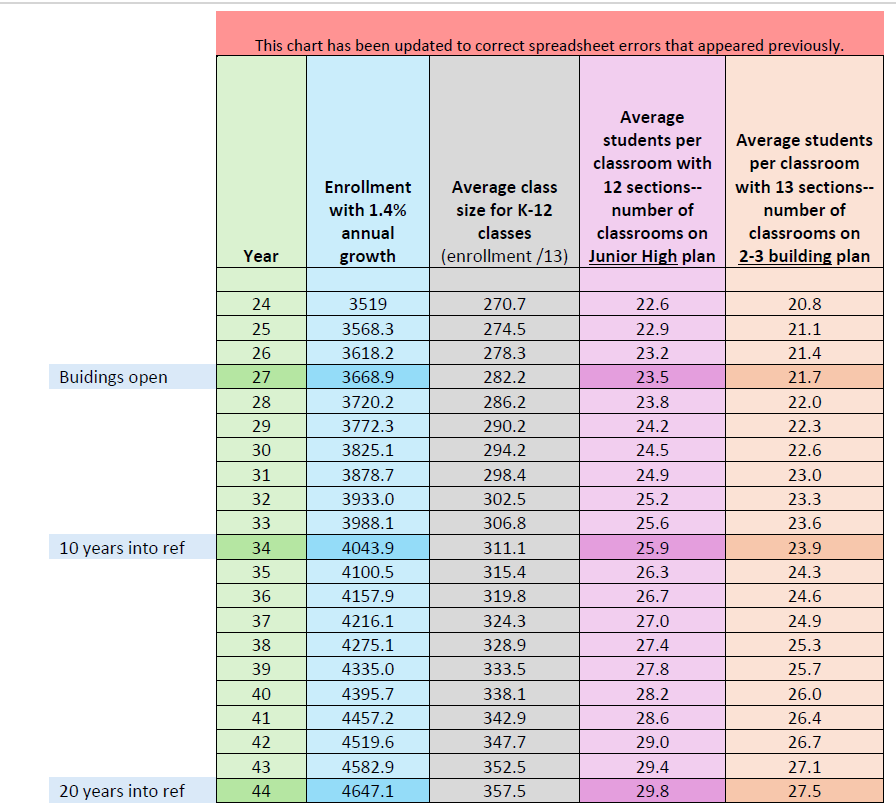
For the new buildings, a second and third grade elementary school and a junior high school with grades 6-8, average class size would look like this:
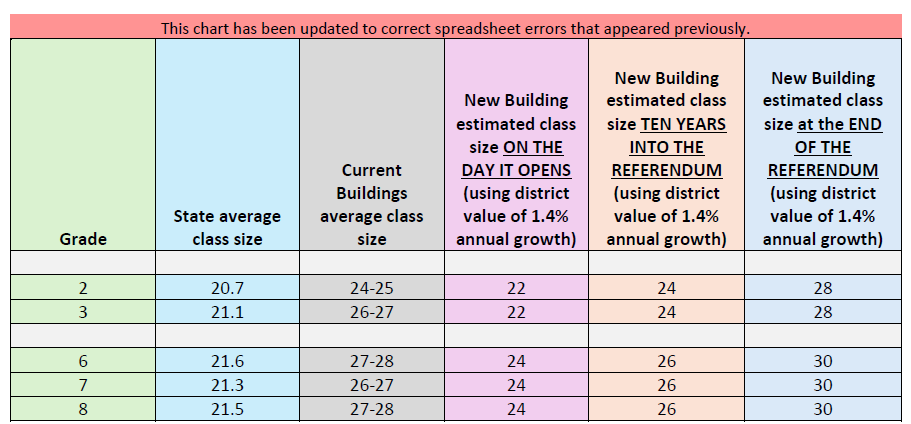
If we go along with the 1.4 percent growth model, and consider their planned capacity of 300 students per grade, the average number of students per grade in 2027 (the year the new buildings are scheduled to open) will be 282. Despite this objective mathematical calculation using the district’s own growth rate, the district tells property taxpayers the buildings are predicted to reach planned capacity by 2032.
The district also plans for max capacity, 350 students per grade, by 2045, just one year after the referendum is paid off. But, using the 1.4 percent model, max capacity could be reached by 2042, two years before the referendum payments end.
A 1.7-percent growth model
This publication has collected enrollment data from the district since 2013. We have all class data from 2002 until 2024. In that time, the Mahomet-Seymour School District has added 841 students.
When we began to look at year to year growth from 2002-2024, we noticed further discrepancies in the district’s 1.4-percent growth model based on the data they have provided. Looking at year-to-year growth from 2015-2024 (the time period the district uses,) we found the actual average increase is 1.7-percent.
Six-day numbers for the 2024-2025 school year show an increase of 90 students district-wide. This was the second-highest increase, following 188 students between the 2020-2021 and 2021-2022 school year.
Since Middletown Prairie Elementary was built on the east side of Mahomet, year-to-year enrollment growth has nearly doubled. Between 2002-2016, 347 students were added to the district, an average annual increase of 26.69 students. But from 2017-2024, the district has added 494 students, with an average yearly growth of 54.89 students.
From 2017 to 2022, the Village of Mahomet saw the addition of 753 new dwellings, according to the Village of Mahomet’s Economic Development site. In 2024 alone, updates to developments in Sangamon Fields, Harvest Edge, and Prairieside subdivisions will bring at least 300 more housing units. Rezoning requests in the last 12 months, the vision to complete the Village of Mahomet’s Comprehensive Plan, and recent land purchases by development groups suggest even more homes may follow.
Those developments could make any prediction fall short, but using the actual 1.7 percent average growth model, this is what total enrollment in the Mahomet-Seymour School District could look like moving forward:
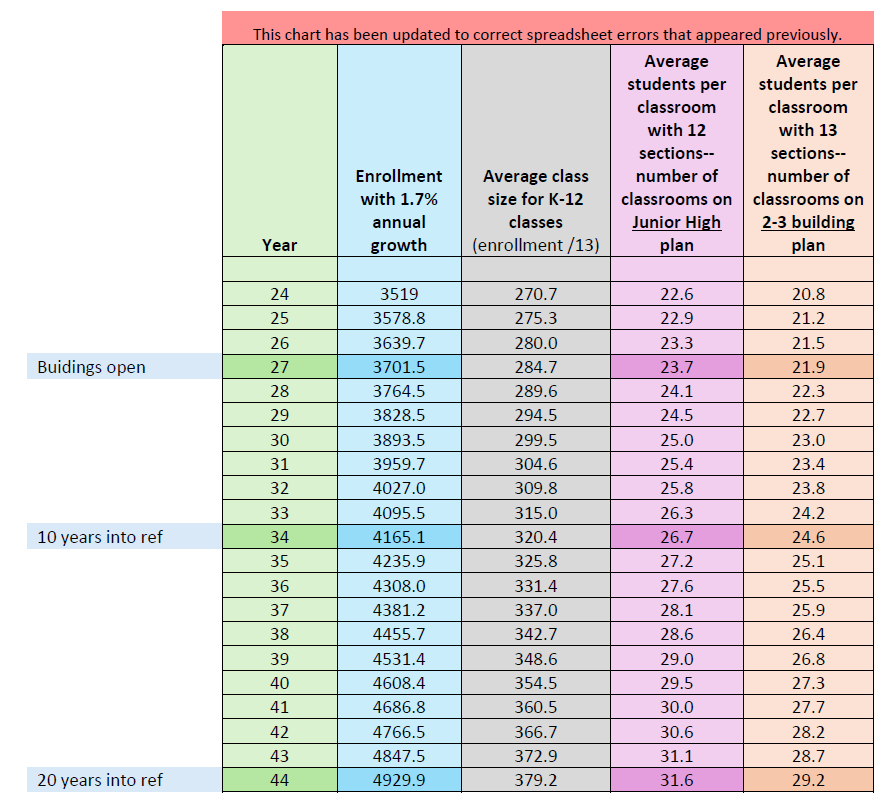
For the new buildings, a second and third grade elementary school and a junior high school with grades 6-8, average class size would look like this:
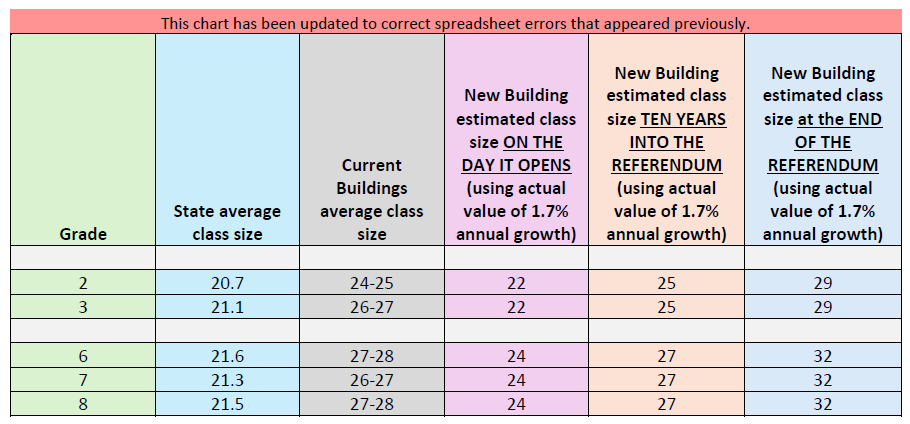
While predicting future enrollment trends is no easy task, the data suggests that the Mahomet-Seymour School District’s current growth models may not be sufficient to account for the continued influx of students. As the community continues to expand, and with more housing developments on the horizon, it’s clear that enrollment will likely exceed initial projections sooner than anticipated. For property taxpayers and district leaders alike, accurate forecasting and flexible planning will be essential to meet the growing needs of students and ensure that the facilities built today can support the community of tomorrow.
To learn more about how plans for the new facilities compare to the current facilities’ uses, click here.



